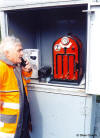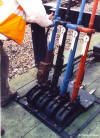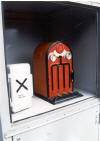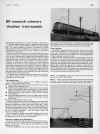Prior to its recent upgrade, when the line was operated by BR, it was a single-ended line which connected with Network Rail's infrastructure at Melton Mowbray .
From the Melton end, the line today passes through pleasant countryside past the villages of Asfordby, Saxelby, Old Dalby, Plumtree, Keyworth and Tollerton to Edwalton, just south of West Bridgford on the southern outskirts of Nottingham, where it terminates. Although it was universally known as 'Old Dalby' the official name for the test track was the 'Melton Junction to Edwalton' Line. After Alstom had upgraded the line was supposed to be then known as the 'Alstom Midlands Test Centre (AMTC)', but most people still referred to it as the 'Old Dalby test track'. Now that Alstom no longer have an interest it will definitely be known as 'Old Dalby'.
| This is the front cover of the R&DD Operational Instruction Booklet for the line dating from 1974. It was run by the Field Trials & Services Section where the author worked for a number of years. |
Rail access is via Melton Junction through a token-controlled manually-operated ground frame released from Melton Station Signal Box, which is still (2013) in an area of mechanical signalling. Trains arrive at Melton Mowbray, usually from the west and stop by the station signal box. The train crew or the 'Officer In Charge of the Train' (OICT) then collects and signs for the 'Edwalton Train Staff and Annetts Key' from the signal box. The train is then signalled to reverse back along the Up line in the 'wrong direction' towards Melton Junction GF, which is situated near the 106¼ MP. The mileage is measured from London St. Pancras Station via Kettering, Glendon Junction, Corby, Harringworth Viaduct, Manton, Oakham and Melton Mowbray.












